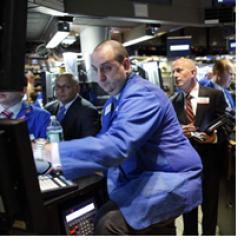At a time when anti-Wall Street rhetoric has reached a fever pitch in Washington, many traders are concerned that sensible and carefully targeted market regulation is being overshadowed by calls for full-scale structural overhaul.
While market participants recognize that certain practices may require increased regulatory oversight as markets evolve and become more complex, they also understand that the complexity of markets themselves should not be cause for concern, so long as they continue to operate efficiently.
The recent debate over proposed changes to sponsored access, together with concerns about the inherent fairness of the U.S. equity markets, is a case in point and shows that Washington may be casting its regulatory net too wide.
Naked Access and Systemic Risk

Although opinions vary as to how much of a threat naked access actually poses, there is general consensus that buy-side firms trading in their brokers’ names (regardless of whether trades flow through their brokers’ pipes or through third party systems) should be subject to appropriate risk controls.
As a result, in January 2010, the SEC voted unanimously to propose a rule that would ban naked access and require brokers to put in place appropriate controls to manage the financial and regulatory risks associated with sponsored trading. Included in the proposal are controls that would check for anomalous values or share quantities, and compare current client orders versus historical trends.
While there is disagreement over how effective and/or appropriate these controls would be (particularly in the case of high frequency algorithmic trading, where large and instantaneous position swings are not uncommon), the proposal represents a good starting point and will receive extensive comments from market participants before the measure is passed in full.
A Fair Market?
There is something about the timing of the SEC proposal that makes the market uneasy, as it closely follows a call to action from Washington to determine whether the current U.S. market structure is inherently “fair.” In fact, the very same day that the SEC voted on naked access regulations, it also voted to seek public comment on a number of issues relating to overall U.S. market structure, including non-displayed liquidity and high frequency trading. One of the questions the SEC is seeking comment on is whether these tools and trading strategies put certain market participants, such as fundamental investors, at a disadvantage.
The concern among many industry participants is that proposed rules governing issues such as naked access, which are fairly clear cut, are being discussed by regulators alongside relatively vague concepts such as the “fairness” of current U.S. market structure, a concept that is extremely hard to define (and in any event should not necessarily fall under the auspices of a government regulator). Granted, the naked access proposal and the proposal to seek commentary on the fairness of U.S. markets are separate and distinct. However, both have been introduced during a period when the SEC is under increased political pressure from Washington to examine current Wall Street practices, including so-called non-traditional trading strategies that lawmakers do not fully understand.
A full discussion of dark pools, high frequency trading and the evolution of U.S. market structure is probably best left for another time. However, even a cursory examination of these new trading models shows they have not created a “two-tiered” U.S. market structure, as some lawmakers might argue. In fact, they have made the market significantly more efficient – and fundamental investors have actually been some of the primary beneficiaries.
In short, no one wants the baby to be thrown out with the bath water. Carefully targeted regulation about a specific trading practice is one thing. Sweeping reform that is at least partially influenced by political pressure is another thing entirely. When regulators begin talking about the inherent fairness of the U.S. market, which is probably the most efficient market in the world, institutional trading firms may wonder just how safe the baby actually is.







